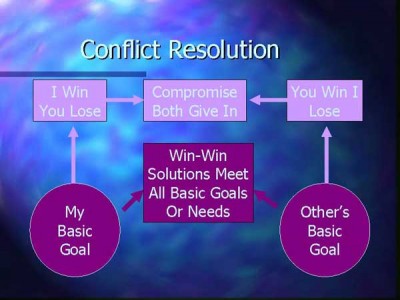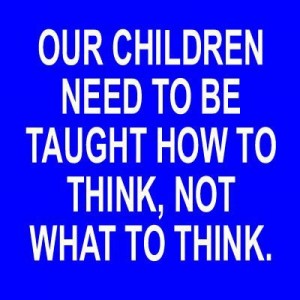WordPress database error: [Table 'adding_b51201.wp_SBConfiguration' doesn't exist]select * from wp_SBConfiguration where id='1'
Transforming Conflict In Teaching

Conflict resolution
As a teacher, I know that teaching brings me many of the most moving, inspiring experiences I will ever have. Experiences where I feel that I have touched the hearts of course participants and changed their lives. To get those experiences, I invest enormous energy, and I take risks with my own heart. At times I reveal some of my most precious experiences, I unfurl the newly formed wings of my most sacred dreams, I teach all that I know and allow people to see the edges of what I am. And in that state of vulnerability, conflict and criticism can seem unbelievably brutal; can leave me wondering if I want to face another class ever again….
As a student, I know that teaching has the potential to open the world for me. Some of the greatest changes in my life have been born in the marvelous nest that teaching provides. Teaching can be like accelerated living; a year of planning, dreaming, discovering, and connecting, packed into a single week. To get those experiences, I commit myself to time and energy, and I take risks with my heart. I reveal my hopes, my uncertainties, my growing edges. Criticism, coercion and teaching that doesn’t meet my anticipation can seem to have discarded or even crushed that trust….
Robert Dilts summarises this more succinctly, saying “The basic problem space of presenting relates to managing the interaction between the presenter and the audience in order to achieve the desired goals of the presentation.” (Dilts, 1994, p 17) This article shares our experience as teachers in finding a path which creates co-operation in the classroom. To us, there is nothing more important for a teacher to learn. Everything else is footnotes, and this is the main text of any teaching manual. Interestingly, though, almost everything in this article we learned by “not doing” at some time –by making “mistakes”. Very little of what now seems to us crucial “common sense”, was written in any book on training. So in this article we’ll share with you not only some of our “best performances”, but also some of the “mis-takes” we learned most from. And before we begin, we will comment on why so little is written about co-operative classrooms and training settings. This is an intriguing question. Why, when teaching is such a powerful interpersonal experience, is there so little written about how to deal with this aspect of the job?
Turning The Problem Inside Out

A different way…
In traditional teacher training, the skills we discuss here would be referenced, if at all, under “discipline problems” or “classroom management”. Alfie Kohn, himself a trainer of school teachers, describes his attempt to model extra-ordinary school teachers. In each city he visited, he tracked down teachers rumoured to have remarkable success. “I was particularly keen to see how they dealt with discipline problems…. As it turned out, I rarely got the chance to see these teachers work their magic with misbehaving children because it seemed as though the children in their classes almost never misbehaved…. After a while, however, it dawned on me that this pattern couldn’t be explained just by my timing. These classrooms were characterised by a chronic absence of problems.” Kohn discovered that these teachers simply weren’t interested in “discipline”, or in “classroom management”, or in “behaviour modification”. They had more important things they wanted to do in their time together with their students. Their question was not “How do I manage these students?” or “How do I discipline these students?”. It was “How can we meet these students needs?” ” (Kohn, 1996, p xi, xv).
Kohn’s studies showed him that great teachers didn’t even need to pay attention to “discipline” or “conflict” management anymore. They took their success for granted, and regarded it as natural and expected. They did not identify it under any recognised teacher training labels. In many ways, they behaved in the classroom just as co-operative human beings behave anywhere, and so there was nothing special to say about it. But for those used to other ways of teaching, their success is revolutionary, and applies at least as fully to adult education as to children’s classrooms. Accelerated learning author and corporate trainer Eric Jensen says “Discipline problems are not only NOT the real problem, but they are a gift to you…. What you call problems are the results of gaps in your teaching and give you important information that you can use to be a better teacher.” (Jensen, 1988, p 176). In describing how these and other successful teachers create co-operative learning environments, there are six major themes we would like to emphasise:
1. Advertising the Contract 2. Negotiating the Contract 3. Warm-up and Preframing for the Content 4. Eliciting Useful States 5. Dealing with the Power Differential
Respectfully 6. Resolving Conflicts with a Win-Win Approach
While some of these themes have been discussed in our previous articles on training we believe collecting them here in this framework will add to a teacher’s ability to use them in a co-ordinated way.
1. Advertising The Contract
Co-operation in the classroom begins with your first contact with potential students or course participants (usually your advertising or course information). A few words said or written carefully at this time equate to hours of conflict resolution time spent untangling mismatched expectations later. If you run public trainings, your advertising can be fairly flamboyant in presenting the benefits you believe people will get from your training. However it needs to be considerably more specific and economical in describing your course requirements and the materials to be provided.
For example, if people need to attend 100% of the time to be certified, this is best advised from the start. We have had people complain half way through a training that they can’t possibly come to every session; they have a life to live. We’ve had people who work an 8 hour job after the seminar, in the evenings, complain that the course is too tiring. We’ve learned to state uncompromisingly that full attendance is required (but not in itself sufficient) for certification. We know now to warn people that our trainings will be a total commitment of their time. We have learned to be clear that the first day starts at the usual time, and the last day ends at the usual time. Some people have a belief that these days don’t matter so much. If we plan an additional evening session, we’ve learned the details need to be given with the course timetable. If we plan to video-tape the course, we’ve learned to tell people before they enrol.
In terms of materials, we have provided manuals that are 98 pages and advertised them as “100 page manual provided”. People complained most indignantly. The secret with all these things is to make a contract that allows you as a trainer to be generous later. If we advertise a 100 page manual, and provide 102 pages, people feel like they got a bargain. This is not a trick. People actually buy into the 100 page deal. We actually exceed our arrangements with them. People do not measure our generosity based on what seems to us to be “fair”. They measure it based on the deal they entered into.
Our advertising proposes a contract with our participants. The people who come to our trainings do not always have any other realistic knowledge of what to expect from us. They are not teachers.
People sometimes phone and ask us to send details of all the trainings we are running in their city over the next month, so they can choose the timings that suit them best. In reality, since we cannot be everywhere at once, we may not have a training in that city for the next year! The point is that other people don’t know that. They also don’t know whether to expect creche facilities, four course meals, a billeting service, free private tuition to enable them to prepare for the course, or any of the other things we’ve had people ask for. Their asking need not cause us to get indignant or resentful. It’s simply an opportunity to clarify our policies and update our information and advertising.
Partially, our own decisions about the facilities and training structures we offer is also motivated by the search for co-operation. In our experience, organising billeting has proved a source of conflict rather than a solution, so we ourselves don’t do it. Providing meals has proved useful (so long as we carefully preframe people’s expectations so they don’t anticipate a five star restaurant). Providing floor cushions for people to recline on during the training has worked for us. In each case, we are deciding which things to add and which to remove, based not on whether we “can” do so, but on whether is supports co-operation to do so.
2. NegotiatingThe Contract

how to think not what to think
When seminar participants enter the training room and when students come into the classroom, they still do not know what the experience will be like. They have a number of (possibly unconscious) questions about who will be there, how we as trainers will behave, and what behaviour will be expected of them as students. These questions are finally answered when they have some sense of rapport with their teachers and group members, and a clearer sense of contract and commitment to the structure of the teaching.
If we do not provide explicit methods for answering these questions early on in the seminar or class, students will take time and energy away from the learning task to find their own answers to the questions. They will also sometimes assume they can use answers which applied in their last school or training environment, or in their idealised fantasy class. We take time to enable people to introduce themselves to each other. We also create a written set of guidelines for how the group will run.
First, we explain the concept of guidelines about how a group or class is, rather than about what is learned. We point out that every group operates with such norms or guidelines, but that if they are not discussed then people have to guess them, test them out etc.
We suggest that the guidelines we are about to show are ones we’ve found to work successfully in this sort of seminar. We then present and briefly explain the guidelines that are important to us in our training, for example:
1. Start and finish at arranged times 2. Do the exercises as described and to the best of your ability 3. Keep personal information confidential 4. It’s okay to check when you’re not certain 5. Respect others’ models of the world 6. Allow for fun
Next, we ask people to get into triads and check that they understand what we meant by these guidelines, and to check if anyone in their triad has any similar guidelines they’d like to add. We give them a few minutes, or until the conversation dies down (whichever is first). This invitation to generate new ideas gives us important information about the expectations of group members. Some trainers wonder if the process isn’t creating problems. We consider it to be testing that we have the agreement to proceed.
Next, we check briefly with each triad that they are okay with the guidelines. If a triad has something to add, we put it on a separate list. We check that such new ideas are okay for us as trainers to go with, and then ask all the triads to turn quickly to each other again and check that they have agreement about the new proposals too. If disagreement about a proposed guideline isn’t reached within the time we have allotted for this exercise, we have that guideline left off the list for now, to be reviewed later.
We now ask people to check whose “job” it will be to ensure that these guidelines are kept to. For most items on the list it becomes clear that these are a collective responsibility. In a written form handed out to all participants, we ask that people who have a concern about these or other matters (at any stage of the training) let a trainer or assistant know as soon as possible, so we can help them resolve it. We undertake to do the same if we have any concerns about a person in relation to these agreements or in relation to their achieving course outcomes. We explain that independent mediation would be available if they were not satisfied.
We have learned to emphasise that we do not undertake to act “on behalf of” participants to “fix” their concerns about another participant, assistant or trainer in secrecy from that other person! In the past participants sometimes came us to us demanding that we stop someone behaving in ways that upset them (but keep the origin of their complaint “confidential”). This simply isn’t possible. It would involve us trying to meet the complainant’s outcomes, without being able to get feedback about how well what we are doing works, and without being able to explain our reasons to the person they are concerned about. We are much more interested in supporting the complainant to take charge of their own concern and discuss it with the person whose behaviour they want to change.
Finally, we either write the list of agreed-on- guidelines on a wall chart that stays up in the room, or have it typed and handed out to all participants. If conflicts arise later in the seminar, these can now be easily raised in the group by framing them with “I just want to check how we’re going with our agreed on guidelines.” We have “preframed” our seminar as a win-win process. We have stated our “needs” or outcomes, and invited the participants to do likewise. We have modelled the process of brainstorming solutions and checking for agreement. We have redefined our roles so that we as trainers are not “responsible” for keeping participants happy. The responsibility is shared.
Working With Younger Students
Transforming Communication Instructor Julie McCracken has used the same process with High School Students. She describes using a modified version of the process with Junior High School students, as follows (McCracken, 2000, p50-51):
“When working with Junior students I use a version of the Japanese “Hexagon Kaizen Think Kit” (described in the book by G Dryden J Vos “The Learning Revolution”). This involves the following steps:
1. Preframing the whole process using sports teams and how they need rules and regulations and that everyone needs to agree to them and know what they are. They also have common goals and the whole team is aiming toward the same thing. 2. A Goal Setting process to get individuals to focus on what they want from the class. I also explain my personal goals for the class. 3. Focus on creating a supportive environment so that we can all reach our goals. This is achieved through a general discussion about the sort of class we want and things that would help to create this. 4. Generating Agreements: Each individual writes down some of the agreements they would like, then they get together with 2-3 mates and create a list. They then write each agreement on a separate coloured hexagon and stick it on the board.
I do several as well as I am part of the group) 5. Selecting the Agreements: Similar hexagons are grouped together and explanations gathered where required. A unanimous vote is required for each agreement to be accepted. If someone does not agree then there is discussion and the issue is adjusted until everyone agrees. This is very important as everyone is expected to stick to these agreements, therefore everyone, including the teacher, must agree to each one. The accepted agreements are then put onto a poster and each student writes them into their book. 6. Methods of enforcing the Agreements are discussed and agreed upon. 7. A Review of progress and possible adjustments is done after a week.
I have found that students are excellent at determining what is important in creating a safe, enjoyable environment and the voting process works quickly and easily. A student will occasionally put a suggestion on the board that is obviously impossible to achieve. When this happens it is noticeable that during the voting process, no-one votes for these suggestions (including the authors).
Regardless of the age of students, they always take the process seriously and the following week is really the time when my sincerity to stick to the agreements is ‘tested’. Occasionally I will need to remind students of the agreements and what they mean, but generally students will enforce the agreements themselves and I am free to concentrate on the teaching/learning process.”
3. Preframing The Content 
A preframe is a statement by you which creates the presuppositions that are needed to understand what you are about to teach. For example, the first paragraphs in this article suggest that teaching is an emotionally significant experience which could be positive or negative. This is a preframe. It is necessary to presuppose this idea in order to understand the rest of the article. If we started the article at the section headed “Advertising the Contract”, it would still contain all the instructions to use this model. And if you already shared our presupposition about teaching and about “class management”, then starting there would be fine. If you didn’t share our presupposition though, we’d have to add further justifications of that frame later (reframes). It’s a lot easier to preframe and set up useful beliefs from the beginning, than to reframe and change unhelpful beliefs after they have “taken hold”.
When you are teaching, it can be useful to go through each of the key concepts or skills you want to teach and ask yourself, “What presuppositions are needed to support someone using that information or those skills?”. You can then design a statement that simply presents this preframe, or a statement which itself presupposes the desired preframe. This is particularly important to do with concepts which have created disagreement in your previous trainings. As Eric Jensen says above “What you call problems are the results of gaps in your teaching and give you important information that you can use to be a better teacher.” (Jensen, 1988, p 176).
For example, we could have begun this article by saying “Since teaching is a powerful and potentially positive emotional experience…” or “How many times have you come out of a teaching situation valuing the material but disturbed by a conflict which happened there?” Both those statements presuppose the preframe that “teaching is an emotionally significant experience which could be positive or negative”. Another way to preframe is to present an experience which gets the person to access a set of internal representations that create the preframe. Having you imagine “unfurling the wings of your most sacred dreams” is an example of creating the representations which install the preframe desired by this article. Metaphors are, of course, a commonly used way of preframing in trainings.
A good preframe can be usefully followed by a question which raises an issue for discussion. If this issue presupposes the preframe, any response to that question will reinforce the preframe. Consider the question we raised in the first section: “Why, when teaching is such a powerful interpersonal experience, is there so little written about how to deal with this aspect of the job?” This question presupposes that teaching is a powerful interpersonal experience. We don’t mind if readers agreed with our theories about why the teaching books don’t discuss conflict resolution. We don’t even mind if people disagree with our claim that there is nothing much written about the subject. Our priority is to provide any readers who enjoy mismatching (disagreeing) with an issue to consider. Whether you agree or disagree with us on this issue, the fact that the interpersonal experience which we call “teaching” is so powerful has been assumed. In fact, the more someone disagrees with us there, the more they argue for our basic assumption.
Preframing the content in this way allows your course participants to enjoy either agreeing or disagreeing. Some people like to agree, and others like to clarify their own separate opinions. That’s fine. Note that this is not a “trick”. Each of our statements is congruently true for us. We have simply arranged them in a certain order to protect the validity of our core ideas. These core ideas are necessary if the reader or listener is to get any benefit from our following statements. Getting them those benefits is our contract with them. Preframes meet our needs while respecting the varying learning needs of course participants.
4. Eliciting Useful States
Course participants come to your trainings to learn, and learning requires that they be in a certain state of mind. States such as hostility or resentment are often less effective learning states, as you may remember from your own early school experiences. NLP provides us with many valuable ways to assist people to enter useful learning states, and to let go of conflict invoking states which may originate in situations completely irrelevant to the training they are now attending. Amongst these are metaphor, anchoring, pacing and leading and reframing (Bolstad & Hamblett, 1998, E).
The following example demonstrates a combination of these choices. On one NLP certification training we ran, we had a man (let’s call him Sam) who began the course extremely angry. In small groups he was assigned to, he argued with the other participants, forcibly advocating views which always seemed to differ from whatever was said first. In the main group, he took up considerable time questioning the validity of each main concept taught by the trainers. We identified that Sam’s learning state was not useful for him or others.
On the third day, we told a particular story in the training. As Sam listened to the story, he went into a “catatonic”, trance-like state, his normal questioning completely absent. After this, his anger seemed to reduce dramatically. Interestingly, while Sam showed no conscious awareness of what had happened, another course participant came up to us after the story to thank us. “You did something when you told that story this morning.” He fed back. “I felt a whole pile of anger just leave me. I thought, ‘I don’t need that anymore!’, and it just went. Thanks!”
Here is the story:
Shivaji
Hundreds of years ago the Mongol hordes swept across Asia, setting up kingdoms in their wake. In India, the Mongols were known as Moguls, and for some centuries their empires held most of north India in sway. At this time there were, as now, many holy teachers or sages in India, to whom local people came for blessing. One day a young man came to a teacher out in the desert. Angry after his long walk, the young man marched into the centre of the holy man’s ashram, and demanded a blessing on his daily work. “Prove to me that there’s something in all this nonsense!” the young man insisted.

Statue of Shivaji
“Who are you, and what do you work at?” asked the teacher calmly.
“I don’t see what business it is of yours,” the man growled, “but my name is Shivaji, and I am a thief. I rob travellers of their possessions.”. The teacher’s disciples were shocked, but the holy man blessed Shivaji and wished him well.
The next week, Shivaji came back to the teacher, well pleased. “This has been my best week ever!”, he announced. “Who would have thought that such a foolish old man could be of use to me.” But the teacher was unimpressed. “I would like to bless you more.” he replied. “I suggest that you find another one or two thieves and link up with them. Then, your fortunes will be even greater.”
The next week, Shivaji returned to confirm that he was the most successful highway robber in the area. But the holy man was still unimpressed. “What could you do if you had twenty such men!” he challenged. And so Shivaji expanded his operation further.
When he came back to thank the teacher for this next blessing, the teacher merely said, “Well, it seems to me that you have not done much yet. If you had a couple of hundred men, now, you could easily throw the local Mogul out of his city and you would be king.” And so it was. The whole area was thus freed of the Mogul oppression. And when the disciples asked the teacher why he had helped such an evil man, he explained … “I have never helped a thief. I only helped a king. But you see, I saw that he was a king the very first time we met.”
5. Dealing with the Power Differential Respectfully

Different levels of power
With such powerful NLP techniques at our disposal, it is all the more important to bear in mind some ethical issues about the situation of teaching. Teaching is potentially a one-up one- down contract. In any relationship, each person has some ability to reward or punish the other person (to help them meet their needs and objectives or to prevent that). We could call this ability “Power” (realising that this word has other potential meanings. See Bolstad & Hamblett, 1998, B).
Even a baby has the ability to reward its caregivers with smiles and co-operation, or to signal its displeasure by crying and struggling. But clearly, in many relationships one person has more ability to reward or punish than the other; more power. A parent has many more choices in meeting or not meeting the baby’s needs than the baby has in meeting the parent’s needs. A spouse who is in paid employment may have more power than one who is not.
The existence of power in relationships is not in itself a problem. Caring for a baby, or being in a marriage can still be a mutually beneficial process. The problems begin when one person uses their power to get the other person to do things they don’t want to do. Even in a potentially equal relationship, this is a high risk activity (imagine a husband witholding “housekeeping money” from a woman who is at home caring for children, until she “co-operates”, for example). In a relationship such as teaching, such actions are potential dynamite.
Teachers have more power than their students. This fact is recognised in legal and professional codes in many countries. As a result, for example, sexual relationships between teachers and students are often considered unacceptable. The risk of the teacher using their power (either to initiate or to control the relationship) is considered too high.
Course participants are aware of their lesser power in the training situation or classroom. They will, for example, make decisions about what feedback they give during a training based on their assessment of the greater risk to them. They may attempt to hide their lack of knowledge for fear of losing certification or other benefits. Such actions actually limit the success of your training. You need genuine feedback. You need to know how your students are doing with their learning. For this reason, it makes sense to work to reduce the power differential between you and your students. Here are some possible ways to do this in the adult training context:
a. Get anonymous written feedback half way through a training, or by use of a suggestion box. Keep this feedback anonymous.
b. Have explicit money-back guarantees for the eventuality that any student was seriously dissatisfied. This doesn’t totally solve participants’ feelings of resentment, but it does limit any grievance.
c. Have a clear “feedback not failure” policy on certification, explaining how students will be supported to reach course objectives if they don’t succeed at initial attempts.
d. Ask students’ permission before revealing personal information about their experiences, or making personal comments about them in a group setting.
e. Do not resolve conflicts with students using the “forcefulness” that you would usually apply to equal relationships. Your comments have far more impact than usual.
This last point deserves elaboration. The open expression of anger by a teacher towards a group may at times seem perfectly justified by the “normal rules of healthy social exchange”. In reality, we have never seen this done without creating some degree of fear and resentment. These feelings in the participants are then extremely difficult to bring out and resolve. The benefits of such expressions of anger (in terms of honesty etc) are generally far outweighed by the problems resulting. This caution is the training equivalent of the principle that “the customer is always right”. Therefore, while you need to make sure that your needs as a trainer are met, resolving conflicts with minimal expression of anger is a crucial skill for successful training.
6. Resolving Conflicts with a Win-Win Approach
Your every response to students during teaching can establish and deepen the climate of co- operation. Our model of conflict resolution, explained more fully in our book Transforming Communication (Bolstad and Hamblett, 1988,F), rests on four core concepts; Problem Ownership, The Two Step, The Win-Win Process, and Values Influencing. While these concepts have their primary origins in the work of Thomas Gordon (1974), our application of them bears in mind the insights of NLP and other solution-focused approaches (Bolstad and Hamblett, 1999 A).
Problem Ownership
Our aim as teachers is to have ourselves in a state where teaching is possible, and our students in a state where learning is possible. When both of us are in these desired states, a wide range of communication skills can be utilised. Advice and information can be given by the trainer, and students can be directly challenged to consider new perspectives and adopt new behaviours. However, when either of us is in an undesired state (called “owning a problem” in Thomas Gordon’s conflict resolution model) the purpose of our being together is obstructed.
Students who are upset, worried, resentful, frustrated, angry, fearful, or otherwise unhappy
with either the training situation or some personal issue are said in these terms to “own a problem”. The appropriate skills for the teacher to use in this situation include skills which maintain rapport (matching the student’s behaviour, acknowledging their concerns, and listening). They also include verbal skills which help the student clarify their outcome and safely create their own solutions. Advice giving, criticism, lecturing, interrogating and other teaching skills, which may be quite safe in the no-problem situation, are not appropriate first responses when the student gives signals that they “own a problem”.
The two most effective verbal skills for this situation are reflective listening (eg “So the problem you’re experiencing is…”, “You want to…”) and open, solution- focused questions (eg “What would it take for you to have solved this?”, “Can I just check, what needs to be different here?”).
On the other hand, when we as teachers are upset, worried, resentful, frustrated, angry, fearful, or otherwise unhappy with either the teaching situation or some personal issue, we could also be said, in these terms, to “own a problem”. This doesn’t mean it’s our “fault” –simply that we are the ones who need to get something changed. When my problem is with some issue unrelated to the teaching situation, I use my own solution generating skills to solve it. But when my problem is related to some behaviour of a student’s, I will of course choose to communicate to them in some way.
Advice giving, blameful criticism, lecturing, interrogating and similar skills are again not very effective. The most useful verbal skill for the situation where I “own a problem” is to describe my problem clearly. In doing this, I will give the student information about the sensory specific behaviour that has generated the problem, rather than my theory about their internal intentions or my judgement of that behaviour.
Instead of saying “You were careless about our agreements”, I’d say something more specific such as “You arrived ten minutes after the arranged start time.”. I can also tell them about any concrete effects the behaviour has on me, and about the nature of the undesired state I’m in. My communication will thus be an “I” message, using a format such as: “I have a problem I’d like some help with. When… The effect on me is… and I feel…” (For example; “I have a problem I’d like some help with. When participants arrive late to the session, I find I need to re-explain things, and we lose time. It gets quite frustrating.”).
The Two Step
In real life, problem ownership is constantly changing. In the middle of assisting a student to solve her problem studying,
I may discover that she has values and attitudes which I deeply resent. I need to monitor the situation, to identify when it becomes appropriate to shift from reflective listening to I message. Certainly, if I send an I message, my student may well feel uncomfortable about that; they may even feel “angry”, “humiliated” or “insulted”. Therefore, before re- sending or re-explaining my I message, I now need to respond to this new student problem with reflective listening. I do this until the student indicates that they feel understood (usually by nodding). We are then back in rapport enough for me to send a revised I message. The result is a kind of “dance” which we term “the two step”.
Here is an example:
Teacher: “There’s something I wanted to mention before we start. There were several cups left on the floor here over lunch time. When coffee spills on this carpet, it actually takes quite a lot of work for us to clear it up. I know we mentioned it earlier, and it’s a bit frustrating to have it still happening.” [Teacher describes her problem in an I message]
Student: “I didn’t actually hear anything said about that earlier. I think some of us were out of the room.” [Student indicates he now owns a problem, having heard the I message]
Teacher: “You didn’t know about it” [reflective listening]
Student: nods [feels understood and so is back in rapport]
Teacher: “Well I’d really appreciate your help with this from now on.” [re-sending a modified I message]
Student: “Sure. Sorry.” [problem solved]
In this case, the result of the Two Step is that the student agrees to change. Usually, trainers’ problems with students can be solved this simply.
However there are two other possible outcomes.
One is that the student may have some prior problem of their own which leads them to produce the behaviour the teacher wanted changed. This produces a Conflict of needs, which requires a search for mutually satisfactory solutions; for example:
Teacher: “There’s something I wanted to mention before we start. There were several cups left on the floor here over lunch time. When coffee spills on this carpet, it actually takes quite a lot of work for us to clear it up. I know we mentioned it earlier, and it’s a bit frustrating to have it still happening.” [Teacher describes her problem in an I message]
Student: “Well, you know it’s pretty hot in here. We need to be able to drink something.”
[Student indicates he also had a problem, which led to his behaviour. This is a conflict of
needs.
] Teacher: “You want some arrangement so that you can get a drink during the training” [reflectivelistening]
Student: nods [feels understood and so is back in rapport]
Teacher: “Well, I do have a concern about coffee and tea staining the carpet. I’d like to find a way that we can solve that problem and also ensure we all are able to get the drinks we need.” [re-sending a modified I message]
Student: “Sure. Maybe we can….” [moving into the search for a win-win solution]
The third possible result of
the Two Step is that the student does not believe that their behaviour concretely affects the teacher. In this case, the student will perceive the teacher as attempting to coerce them into line with the teacher’s values or personality traits. This is a conflict of values; for example:
Teacher: “There’s something I wanted to mention before we start. There were several cups left on the floor here over lunch time. When coffee spills on this carpet, it actually takes quite a lot of work for us to clear it up. I know we mentioned it earlier, and it’s a bit frustrating to have it still happening.” [Teacher describes her problem in an I message]
Student: “I don’t actually think we need to worry about this. We’re all adults. Surely we can take care of our own spills.” [Student indicates he doesn’t believe that his behaviour needs to affect the trainer. This is a conflict of values.]
Teacher: “You’d rather it was left up to each individual to deal with.” [reflective listening]
Student: nods [feels understood and so is back in rapport]
Teacher: “Well I have a different opinion about what’s likely to happen here. Is it okay for us to discuss this?” [re-sending a modified I message and asking permission to influence the student’s value]
Student: “I guess so. I mean, I’ve had coffee each session, and I just make sure it doesn’t spill….” [student and trainer are in a values influencing process]
The Win-Win Process
Where a teacher and students have conflicting needs, the use of I messages and reflective listening helps to set these out non-blamefully. The teacher can then guide problem-solving to find a solution which meets both sets of needs. This can be thought of as a seven step process:
1. Preframe the situation as a problem to be co-operatively solved.
2. Define each person’s basic need or basic outcome (what prompted their actions).
3. Brainstorm solutions which meet both sets of basic outcomes.
4. Evaluate these solutions to check how well they meet both sets of needs.
5. Agree on the best solutions. 6. Plan and act on the agreed solutions. 7. Check how the solutions are working.
For example; in a recent training held during the summer holidays, our venue was a school set in beautiful New Zealand native bush, and overlooking a bay. There was a swimming pool available for participants’ use, and there were many far-flung and quiet places for students to do small group activities. Unfortunately, it became increasingly difficult to get students back into the training room at the time set for the next activity. Those who arrived early were frustrated, and as trainers we were anxious about our timing.
After one lunch break, once everyone was back, we explained that we had a problem we needed help with (Step 1). We pointed out, in I message form, the two concerns we had. Participants explained that they liked to find shaded outside places to work. Others explained that when they finished an exercise early, they liked to take a quick dip in the pool.
Unfortunately, the pool was too far away to hear the bell which called people back, and they didn’t have their watches on. We reflectively listened to these difficulties, and restated our own problem (Step 2).
We then invited suggestions as to how we could solve all these concerns. Many suggestions were made. Some were definitely not likely to work for us as trainers (for example sending an assistant over to the pool to advise people five minutes before return time seemed to us to be putting in more than our share of work. However, we accepted these ideas in the brainstorming (Step 3),
and then shared our views as we evaluated each idea (Step 4).
Our final decision involved setting defined areas of shaded lawn to work in, and people arranging their own time monitoring at the pool (Step 5).
The swimmers planned the details of their own monitoring (Step 6).
Together, these solutions worked (Step 7).
The 15 minutes we took to discuss it was well worth investing, to avoid the extra ten minutes per exercise, and the extra stress, that we had been coping with. But, more important, the process itself evoked a more co-operative atmosphere. It increased people’s respect for our
needs as trainers, and their sense of us working together.
Values Influencing
A conflict of values exists in any disagreement when a student does not believe their behaviour concretely affects the teacher (eg if the teacher asked the student to use “more respectful language”), or where a teacher does not believe their behaviour concretely affects the student (eg if a student wanted the teacher not to display their products for sale in the training room). Such conflicts operate on what NLP would call a “deeper neurological level”. As a trainer, in such situations I may want to influence not just the student’s behaviour, but also their more basic values or beliefs.
The use of coercive power is no more effective here than in conflicts of needs. And yet there are some situations where we would decide that our value is so important that we will not negotiate. For example, we have NLP trainees who believe that they should be certified without attending a training, because they’ve read all our books. As far as they are concerned, it’s “no skin off our noses” to give them a certificate. For us, though, our value of integrity in assessment and certification takes priority.
We have had students who think that rapport skills are nonsense, and don’t see why they should have to use them in the exercises. We do.
The important thing to realise is that when we insist on these behaviours, we have not actually influenced the participants’ values. They may attend the training, but still feel aggrieved that we didn’t certify them without attending. They may use rapport skills in the training, but never again. So in a conflict of values our interest is to actually influence the other person’s value, rather than merely control their behaviour. There are three skills which maximise our chances of doing this. They are:
3. Consulting.
This is the core skill for influencing another’s values. It involves carefully sharing one’s own opinions, identifying them as such. It then involves reflectively listening to the other person’s opinions, and respectfully leaving them to decide to change. This seems so simplistic that its power is easily underestimated. But in fact, many of the values which you hold today will have been established as a result of someone’s effective consulting. Consulting does not need to result in an immediate “conversion” experience where the other person changes their opinion in front of you. It more often results in them going away, feeling good about how you respected their right to decide, and reviewing in a calmer mood the pros and cons of your advice.
The Power of Co-operation
Research on teachers who are less controlling and more supportive of students’ autonomy, finds that their students are more self confident, and more interested in learning (Kohn, 1996, p 85). The more that students experience their class as a co- operative community, then the more they see learning as intrinsically valuable, the more skilled they are at resolving conflict, and the more supportive of others they become (Kohn, 1996, p 103). Using these processes for creating co- operative win-win educational experiences pays off in terms of the most basic goals of learning. But it also pays off in terms of teacher satisfaction. We have experience training hundreds of teachers, at all levels of the education system. In every training, we find that “authoritarian” teachers do not want to create coercive or conflict-ridden classrooms or groups. They simply do not know the skills to do otherwise.
Those skills include initiating clear contracts from our first contact with students, negotiating basic agreements that set a co-operative tone, preframing so that students who enjoy disagreeing can do so successfully, eliciting co-operative states in students, and reducing the power differential between students and teacher. All these processes create a climate in which win-win conflict resolution is expected and effective. Conflict resolution itself involves identifying who “owns each problem”, using reflective listening and I messages in alternating sequence to identify the type of conflict, and then either working towards solutions which meet all basic outcomes, or influencing values respectfully.
When these skills are applied fully, they become almost “invisible” to both students and observers
Identifying values which the participant shares with us, and building on these. The student who disagrees with rapport skills may value flexibility, for example, and may be able to accept a reframe of their use of rapport skills (“some of the time”) as an indication of flexibility.
Demonstrating the effectiveness of our own skills (“modelling” them, to use this term the way it is used in Psychology). If we consistently use rapport skills, the student who disagrees with them has an opportunity to see their successfulness. They will, at least, get a sense of our congruent valuing of the skill.
Taken from the Transforming Communication Basic manual © Transformations International Consulting & Training 2007